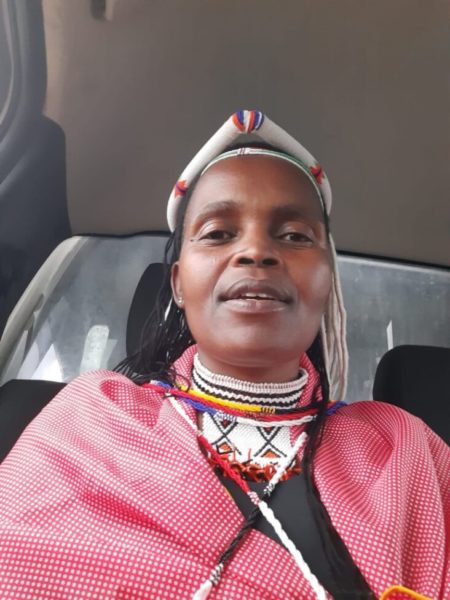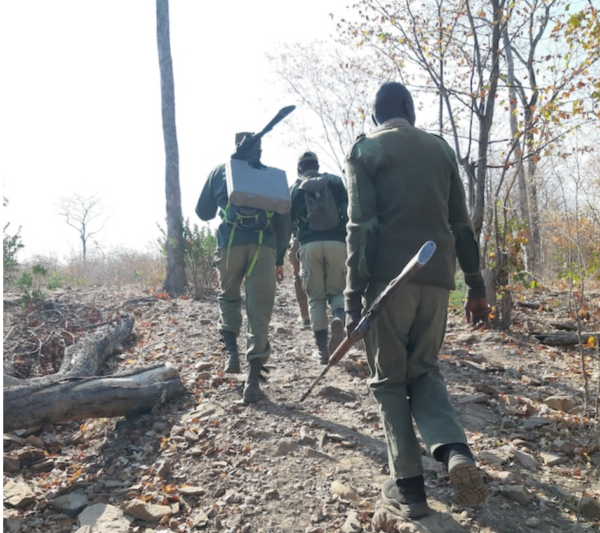Environmental Defenders Risk Their Lives Globally

By Busani Bafana (IPS)
HAVANA TIMES – In 2017, South African activist Nonhle Mbuthuma took a stand against the powerful oil giant Shell, halting their plans to explore the pristine Wild Coast.
Despite facing death threats, she refused to back down. As a co-founder of the Amadiba Crisis Committee and a 2024 Goldman Prize winner, Mbuthuma continues to fight for her community’s rights and the environment. Her bravery reflects the countless risks land and environmental defenders face across the globe.
The stakes are high. According to a recent report by Global Witness, 196 land and environmental defenders were murdered in 2023 alone, with Colombia suffering the highest number of deaths. Indigenous communities in Brazil, Mexico, and Honduras have been disproportionately targeted, standing up to powerful companies that prioritize profits over people and the planet.
Many people defending the environment have stood up to powerful companies. Since 2012, a staggering 2,106 defenders have been killed worldwide.
Africa, too, is a dangerous battleground for environmental defenders, with 116 murders recorded between 2012 and 2023. Many of these deaths involved park rangers in the Democratic Republic of Congo (DRC), and others occurred in Rwanda, Ghana, Kenya, Chad, Uganda, Burkina Faso, Liberia, and South Africa.
However, the alarming numbers only scratch the surface. Many deaths go unreported, leaving a vast number of environmental defenders without justice. Yet, despite these overwhelming threats, Mbuthuma has been undeterred, risking her life to protect the land and the environment from exploitation.
Mbuthuma continues to expose the devastating impact of extractive industries, including deforestation and land grabbing. She has called attention to the violence and intimidation that indigenous communities and activists face for defending their land.
“The brutality of these attacks reveals something profound: the power that ordinary people wield when they unite for justice,” Mbuthuma noted in a foreword to the Global Witness report.
At the core of these killings is a clash between development and sustainability. Activists like Mbuthuma are not opposed to development but advocate for a model that respects both the environment and the rights of local communities to their natural resources.

Unfortunately, their calls for responsible development are often seen as an obstacle by investors and developers, leading to increased land grabs, resource extraction projects, and violent repercussions for those standing in the way.
Africa’s immense natural wealth makes it a prime target for multinational corporations and foreign governments. The continent holds 30 percent of the world’s mineral reserves, 8 percent of its natural gas, and 12 percent of its oil, according to the United Nations Environment Programme (UNEP). It also boasts 40 percent of the world’s gold, up to 90 percent of its chromium and platinum, and large reserves of cobalt, diamonds, and uranium. With over 60% of the world’s arable land in Africa, it’s no surprise that the race to exploit these resources has led to severe environmental destruction, displacement of local communities, and escalating violence.
A shocking aspect of this violence is the pervasive impunity. Perpetrators are rarely prosecuted, and in many cases, the identities of those responsible remain unknown.
“It’s rare that we ever get to know who murders a defender,” says Laura Furones, Lead Author and Senior Advisor to the Land and Environmental Defenders Campaign at Global Witness, told IPS. “If there is something these cases share, it is that they are shrouded in impunity. Cases are often left unresolved, and the families have to live knowing that the perpetrator won’t face consequences. Even in the few instances where justice is served, it is usually the hired assassins who end up in jail, while those who ordered and funded the murder walk free.”
Furones also notes that many of these killings go unreported, particularly in regions like Africa, where accessing information is a challenge.
“There are many good organizations working hard to improve reporting, but they often operate in difficult circumstances. Civic spaces are limited, access to information is curtailed, and those trying to expose attacks on defenders are themselves at risk.”
The mining industry is especially notorious for its role in this violence. In 2023, the mining sector was linked to the highest number of defender murders worldwide, according to Global Witness.
“Our data shows that mining is by far the sector most frequently connected to murders of environmental defenders. The appalling practices by mining interests are well documented, and as we shift towards an economy that relies less on fossil fuels, the demand for critical minerals is only going to increase. We urgently need better practices to prevent a further surge in violence,” Furones emphasizes.
As climate change accelerates, competition for land and resources intensifies, particularly in Africa. The continent’s vast minerals and natural resources are in high demand for projects that have displaced local communities from their ancestral lands, exacerbating tensions and leading to further conflict.
Mbuthuma’s fight is just one example of the broader global struggle to protect natural resources.
South Africa, in particular, has seen its share of tragedy. In 2016, anti-mining activist Sikhosiphi Rhadebe was assassinated for opposing titanium mining in the Xolobeni region. Similarly, in the DRC, more than 50 environmental defenders were killed between 2015 and 2020, many of them caught in conflicts over artisanal mining and logging.
The rush for land in Africa has expanded not only for agriculture but also for “green” projects that claim to combat climate change. For example, large-scale land acquisitions for biofuel plantations and irrigation projects have displaced communities in Kenya and Ethiopia, leading to violence and unrest. In Kenya’s Lake Turkana region, sugarcane plantations and geothermal energy projects have triggered conflicts with pastoralist communities, while in Ethiopia’s Omo Valley, irrigation projects have displaced indigenous communities.
Despite the mounting risks, environmental defenders continue to raise their voices. They demand not just environmental protection but also justice.
“Our voices against environmental injustice are being silenced by the killings of defenders, but that will not kill our activism,” Mbuthuma said. She calls for increased protection and support for environmental defenders and anti-land grab activists, particularly in Africa.
“Development has always been unjust, and that’s why it has been easy to eliminate defenders of the environment. But getting rid of defenders doesn’t solve the problems we face in Africa today—all in the name of development,” Mbuthuma explains. She emphasizes that local communities must have a say in decisions that affect their lands and livelihoods.
Mbuthuma’s fight, along with that of countless other activists, highlights the urgent need for reform in how land, mineral, and natural resources are exploited in Africa. “We are fighting for the future of Africa, and for our children,” Mbuthuma said. “The battle for environmental justice is not just about protecting land and biodiversity; it’s about safeguarding the rights and future of the people who depend on these resources.”





